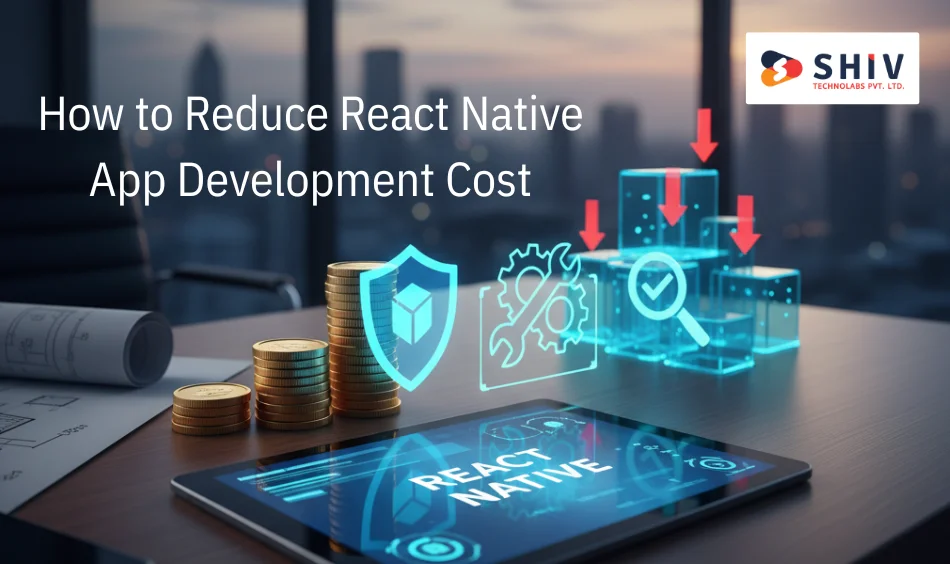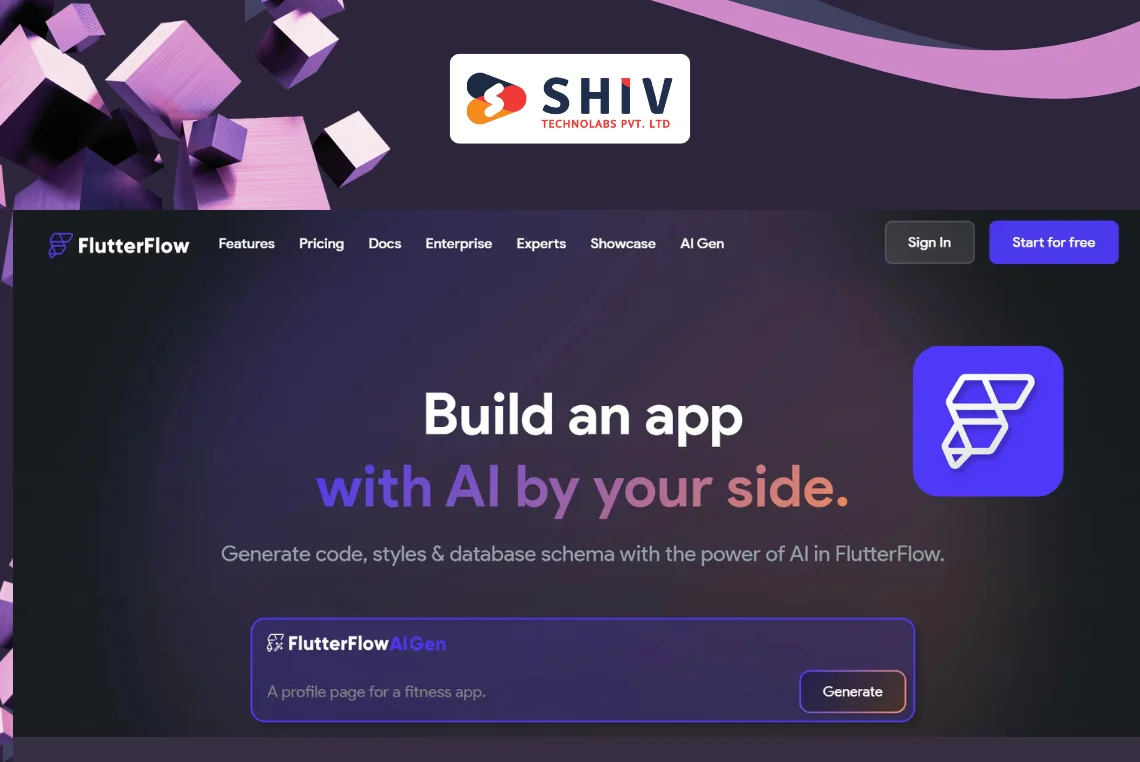Table of Contents
React Native has become one of the most preferred frameworks for building mobile apps that run smoothly on both iOS and Android. It’s known for reducing development time and providing near-native performance — all while keeping the budget under control.
Whether you’re a startup launching your first MVP or an enterprise expanding your digital presence, the question always remains the same: how much does a React Native app development cost?
In this blog, I’ll share a detailed cost breakdown based on features, regions, app types, and hiring models. You’ll get clarity on how pricing is estimated and what factors matter most when planning your React Native project.
Why Businesses Choose React Native for Cross-Platform Apps?

The biggest reason businesses choose React Native is the balance between cost, speed, and performance. Unlike building separate apps for iOS and Android, React Native allows developers to share most of the codebase, which directly lowers development time and expenses.
Here’s why many startups and enterprises go with React Native:
- Single codebase for multiple platforms: One development effort runs on both iOS and Android.
- Reusable components: Developers can reuse existing modules, reducing repetitive work.
- Near-native performance: Apps deliver smooth interaction, even for high-traffic features.
- Community-driven updates: React Native is supported by a global developer community and Facebook’s strong ecosystem.
- Third-party plugin support: APIs and SDKs integrate easily with minimal effort.
These advantages make React Native a practical choice for projects with limited timelines or budgets — especially when you aim to reach both Android and iOS users together.
Factors That Affect React Native App Development Cost
Estimating the cost of React Native app development depends on several interconnected factors. Let’s go through the most important ones.
1. App Complexity and Features
The first cost driver is the scope of your app.
- Basic apps (like calculators or note-taking apps) fall between $10,000 – $25,000.
- Mid-level apps (like eCommerce or chat-based apps) range from $25,000 – $60,000.
- Complex apps (like enterprise, fintech, or marketplace platforms) can reach $100,000 or more.
Each added feature — authentication, chat, or live tracking — pushes the budget higher.
2. UI/UX Design Requirements
Custom UI animations, transitions, and micro-interactions demand more design hours. While a minimal design may cost around $2,000 – $5,000, a fully customized interface with motion effects or dark mode support can reach $10,000+.
Design isn’t just visual — it affects user retention and overall usability.
3. Backend Infrastructure
Your backend defines how your app handles data, authentication, and real-time updates. Using Firebase or AWS increases reliability but adds recurring costs.
Apps that include dashboards, analytics, and role-based access typically spend between $5,000 – $15,000 for backend setup.
4. Third-Party Integrations
Adding payment gateways, chat systems, maps, or analytics tools also influences cost.
- Payment gateway integration: $1,500 – $4,000
- Push notifications: $800 – $1,500
- Chat systems: $2,000 – $6,000
The more integrations your app needs, the higher the configuration and testing time.
5. Developer Location and Experience
Where your development team is based has a big impact on pricing.
| Region | Hourly Rate (USD) |
|---|---|
| India | $20 – $40 |
| Eastern Europe | $40 – $70 |
| USA | $60 – $120 |
| UK | $50 – $100 |
| UAE | $40 – $90 |
Hiring experienced developers may seem expensive upfront, but it reduces delays and post-launch fixes — ultimately lowering total cost.
6. App Maintenance and Upgrades
Once your app is live, you’ll still need to handle bug fixes, OS updates, and feature upgrades. Maintenance usually costs 15–25% of the initial project price per year.
This keeps your app compatible with new devices and security standards.
React Native App Development Cost Breakdown (By App Type)
The cost of building a React Native app varies widely depending on the type of project. A utility app with basic functionality will always cost less than a marketplace, fintech, or enterprise app with complex backend logic.
Below is a clear breakdown of what you can expect:
| App Type | Estimated Cost (USD) | Example Use Case |
|---|---|---|
| Simple Utility App | $10,000 – $25,000 | To-Do, Notes, Calculator |
| Mid-Level App | $25,000 – $60,000 | eCommerce, Food Delivery, Chat App |
| Enterprise App | $60,000 – $120,000+ | Fintech, Healthcare, Logistics |
The main price difference comes from user features, third-party integrations, and data handling complexity.
1. Cost of React Native MVP Development
If you’re validating an idea, start with a Minimum Viable Product (MVP). It focuses on essential features, keeping development time and cost low.
- MVP cost range: $8,000 – $20,000
- Timeline: 6–10 weeks
You can later expand to a full version once the concept performs well.
2. Cost of On-Demand, Fintech, and Marketplace Apps
On-Demand Apps
- Example: Taxi or delivery app
- Cost: $25,000 – $70,000
- Includes maps, tracking, and push notifications.
Fintech Apps
- Example: Wallet or payment solution
- Cost: $40,000 – $100,000+
- Includes encryption, payment gateways, and secure APIs.
Marketplace Apps
- Example: Multi-vendor eCommerce
- Cost: $50,000 – $120,000
- Requires admin panels, vendor onboarding, and advanced search.
Read more: Mobile App Development Costs
React Native App Cost by Region
Development cost depends heavily on where your team is located.
| Region | Hourly Rate (USD) | Average App Cost |
|---|---|---|
| India | $20 – $40 | $15,000 – $40,000 |
| Eastern Europe | $40 – $70 | $30,000 – $80,000 |
| USA | $60 – $120 | $50,000 – $150,000 |
| UK | $50 – $100 | $40,000 – $130,000 |
| UAE | $40 – $90 | $35,000 – $100,000 |
| Australia | $45 – $95 | $40,000 – $110,000 |
Businesses often prefer India for quality React Native app development at affordable rates. You can easily save up to 40–60% without compromising quality.
Feature-Wise Cost Breakdown for React Native App Development
Each feature adds its own development and testing effort. Here’s an overview of how much common components cost on average:
| Feature | Estimated Cost (USD) | Remarks |
|---|---|---|
| Authentication & User Profiles | $1,000 – $3,000 | OAuth, Google, Facebook logins |
| Push Notifications | $800 – $1,500 | Firebase or OneSignal |
| Payment Gateway | $1,500 – $4,000 | Stripe, Razorpay, PayPal |
| Real-Time Chat | $2,000 – $6,000 | Socket.io, Firebase |
| Maps & Geolocation | $1,000 – $3,000 | Google Maps SDK |
| Admin Panel | $2,500 – $7,000 | Node.js or Laravel backend |
| Analytics Integration | $500 – $1,500 | Google Analytics, Mixpanel |
| Multi-language Support | $800 – $2,000 | i18n setup |
| Offline Mode | $1,500 – $3,000 | Local storage + caching |
| Accessibility Compliance | $500 – $1,200 | WCAG guidelines |
Feature cost multiplies with app complexity. A chat system may be $2,000 for a simple setup or $6,000+ for a full messaging experience with media sharing.
Cost of Hiring React Native Developers
Choosing the right hiring model directly affects total project cost. Let’s compare common models:
| Hiring Model | Rate (USD/hour) | Best For |
|---|---|---|
| Freelancers | $20 – $60 | Small MVPs or short-term work |
| In-House Team | $80 – $120 | Ongoing, large-scale projects |
| Development Agency | $25 – $90 | Full-cycle app development |
Hourly vs Monthly Pricing
- Hourly model: Great for flexible or evolving projects.
- Monthly model: Ideal for startups that need dedicated focus.
- Fixed price: Best for well-defined projects with a clear scope.
React Native App Maintenance and Update Cost
After launch, regular maintenance keeps your app stable, secure, and compatible with OS updates.
| Maintenance Type | Cost per Year (USD) | Frequency |
|---|---|---|
| Bug Fixes & QA | $2,000 – $5,000 | Monthly |
| Security & OS Updates | $1,000 – $3,000 | Quarterly |
| Feature Expansion | $3,000 – $10,000 | As Needed |
Ongoing updates help improve app performance and prevent user drop-offs.
React Native vs Flutter vs Native – Cost Comparison
To help you make an informed decision, here’s a side-by-side comparison:
| Platform | Development Cost | Maintenance Cost | Code Reuse | Time to Build |
|---|---|---|---|---|
| React Native | Medium | Low | 80% | Fast |
| Flutter | Medium | Low | 85% | Fast |
| Native (iOS + Android) | High | High | 0% | Slow |
If your goal is faster delivery and a balanced budget, React Native usually offers the best ROI for cross-platform apps.
How to Reduce React Native App Development Cost (Without Sacrificing Quality)?

Smart planning can lower React Native app costs without affecting performance or user experience. Here are proven ways to save money and time during development:
- Start with MVP first – Focus on core functionality to validate your idea. Add advanced features after initial success.
- Reuse components – React Native’s modular structure lets developers reuse UI parts efficiently.
- Use open-source libraries – Many stable, community-tested packages reduce coding time.
- Outsource to skilled teams – Partnering with experienced agencies often costs less than hiring in-house teams in high-cost regions.
- Plan upgrades early – Keep scalability in mind during development to avoid expensive refactoring later.
Each of these practices helps in controlling expenses while maintaining code quality and performance.
How Shiv Technolabs Builds Cost-Effective React Native Apps?
At Shiv Technolabs, we focus on delivering React Native applications that balance cost, performance, and long-term scalability.
Our structured approach covers every stage of the development cycle:
- Requirement Analysis: We first define your project goals, target audience, and expected outcomes.
- Design and Prototype: Interactive prototypes help visualize the product early.
- Development and Integration: We build cross-platform codebases using industry best practices.
- Testing and QA: Continuous testing guarantees stability and usability across devices.
- Post-Launch Support: Regular updates, analytics monitoring, and performance fine-tuning keep your app consistent and reliable.
Our team has delivered multiple React Native projects — from startup MVPs to large enterprise systems — within competitive budgets and strict timelines.
Conclusion
React Native remains one of the smartest choices for businesses wanting high-quality apps without paying the cost of two native builds. The total investment depends on complexity, integrations, and developer expertise — but compared to native frameworks, React Native consistently delivers higher value and faster returns.
If you’re planning to build a mobile app that fits your business goals and budget, contact Shiv Technolabs. Our React Native development team delivers scalable apps with
transparent pricing, ensuring that you pay only for what adds real value to your product.
Frequently Asked Questions
Q1: How much does it cost to build a React Native app?
The cost usually ranges between $15,000 – $120,000, depending on features, complexity, and team location.
Q2: Is React Native cheaper than native app development?
Yes, because developers can reuse up to 80% of the code for both iOS and Android, reducing time and overall expense.
Q3: What affects the React Native app development cost?
App complexity, integrations, UI design, backend requirements, and developer location are the key cost drivers.
Q4: How long does it take to build a React Native app?
A simple app may take 6–10 weeks, while a full-scale enterprise app may take 4–6 months.
Q5: What is the hourly rate of React Native developers in India?
Rates range from $20 – $40 per hour, depending on experience and project size.
Q6: How much does React Native app maintenance cost per year?
Maintenance typically costs 15–25% of the initial development price.
Q7: Can startups build MVPs under $20,000 using React Native?
Yes, an MVP with basic UI, login, and backend can be developed within that range.
Q8: What are the hidden costs in React Native projects?
Licensing for third-party SDKs, ongoing cloud hosting, and app store charges are often overlooked.




















